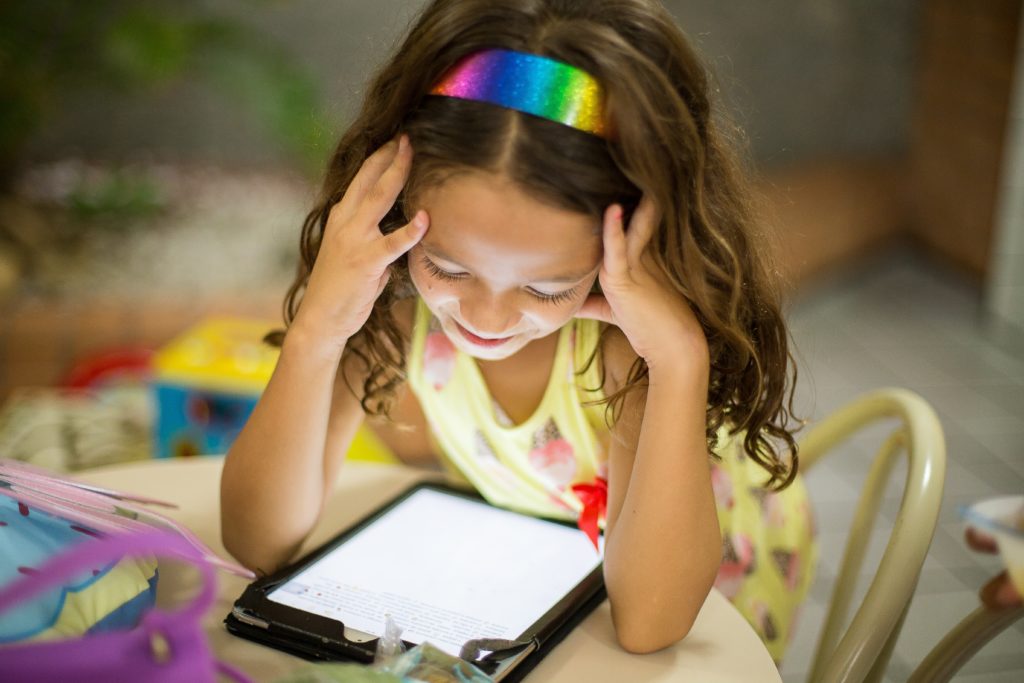Kids and screens. This has to be one of the major dilemmas of modern parenting.
How much is too much? Is it doing them damage? Is it an inevitable part of life now?
Before devices, there was TV. Parents were warned against using the box as a babysitter (just as many modern parents use smart phones and tablets today).
And before that there was the radio. I’m not sure I’ve ever heard any detrimental health warnings about excessive exposure to that…
Then of course, there is the original form of entertainment and escapism: The book.
The only time I’ve heard a threatened negative outcome from reading too much was when I was younger. My parents told me they would throw my dinner out if I kept reading at the table (I’m not sure that counts).
When it comes to little kids they are attracted to all these things – screens, sound, books. They love the magic of moving images on screens, the allure of audio and the tactile nature of books.
So what is best for developing brains when it comes to conveying and comprehending stories?
Researchers in Toronto aimed to answer this question and determine whether there are differences in the way the brain engages with stories when presented in the different formats of audio, illustration and animation. Using functional magnetic resonance imaging (fMRI), they monitored connectivity amongst networks in the brain responsible for language, visual perception, imagery and the ‘default mode’ network, which is believed to be linked to daydreaming, reflection and imagination.
What they found is very interesting but probably not surprising.

The researchers have dubbed their findings the “Goldilocks effect”.
Showing kids the story in animated form produced a response that was “too hot” – even with all the stimulation of animation, the visual and audio perception networks in the brain were working, yet other key networks were not. Kid’s also showed the lowest levels of comprehension receiving the story through animation.
The audio condition was “too cold”– the language networks of the brain were activated but there was less connectivity overall. Kids struggled to keep up with the story in this format.
However, having a story read to them while looking at illustrations in a book, was “just right”. The researchers found increased connectivity between all networks of the brain. These findings show that being read is particularly important for 3-5 year olds, whose imagery and default networks in the brain are still developing.
Being read to helps children exercise their “mind’s eye” to form mental images of the story, with help from the illustrations in the book. Animated stories do all this work for them, while audio doesn’t give them enough to work with.
While the importance of reading to your child is still a strong message from educators and early childhood professionals, it can be tempting for time poor parents to “outsource” this task to apps, ereaders or audio books.
This research shows that for developing brains, nothing can replace an adult with a story book.
I’m sure the kids will agree.

